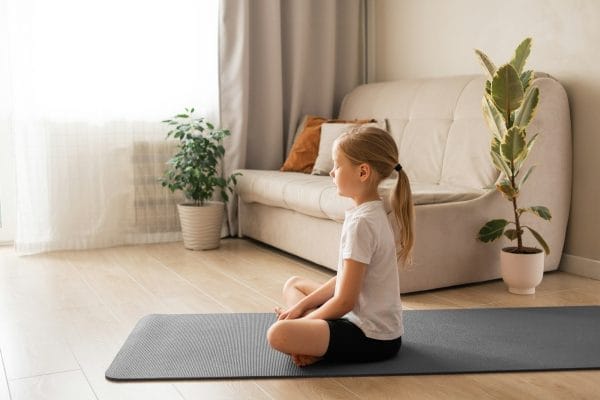Mindfulness Meditation for Kids
In today’s fast-paced world, where distractions are omnipresent, teaching children the art of mindfulness meditation can be an invaluable gift. Mindfulness, simply put, is the practice of being fully present and engaged in the moment, aware of your thoughts and feelings without distraction or judgment. For children, who are naturally curious and more present in their daily activities, mindfulness can help enhance their awareness, improve emotional regulation, and increase happiness.
This article delves deep into the concept of mindfulness meditation for kids, offering insights, examples, and practical advice to help integrate this practice into their lives.

Understanding Mindfulness Meditation
![]()
Mindfulness meditation is a form of meditation that emphasizes mental awareness and acceptance of one’s thoughts and feelings. It’s about acknowledging your thoughts and feelings without getting caught up in them. For children, this can mean noticing when they’re feeling upset or distracted and learning to refocus their attention on their current activity or breath.
Why Mindfulness for Kids?
![]()
Recent studies and research have shown the numerous benefits of mindfulness meditation for children, including:
- Improved focus and concentration
- Better emotional regulation
- Increased empathy and understanding of others
- Enhanced resilience in facing stress and challenges
- Greater sense of calmness and relaxation
By introducing mindfulness meditation to children, we equip them with tools to navigate their emotions and thoughts more effectively, fostering a healthier mental environment for their growth and development.
How to Teach Mindfulness to Kids
![]()
Introducing mindfulness to children should be a fun and engaging process. Here are some simple yet effective ways to get started:
Start with Short Sessions
Children have shorter attention spans, so it’s crucial to keep mindfulness sessions brief initially. A good starting point is a few minutes, gradually increasing the duration as they become more accustomed to the practice.
Use Guided Imagery
Guided imagery is a form of visualization that involves describing a peaceful and calming scene or situation. This technique can help children relax and focus their minds, making it an excellent introduction to mindfulness.
Incorporate Mindful Breathing
Mindful breathing is at the heart of many mindfulness practices. Teach children to pay attention to their breath, noticing the sensation of air entering and leaving their bodies. This simple practice can help calm their minds and bring them back to the present moment.
Practice Mindful Listening
Encourage children to practice mindful listening by paying full attention to sounds around them without judgment. This can be a fun exercise, such as listening to the sounds of nature during a walk.
Real-Life Applications of Mindfulness for Kids
![]()
Integrating mindfulness into daily activities can help children apply what they’ve learned in meditation sessions to real-life situations. Here are a few examples:
- Mindful Eating: Encourage children to eat slowly and with awareness, savoring each bite and paying attention to the taste, texture, and smell of their food.
- Mindful Walking: Teach children to be aware of each step when walking, noticing the sensations in their feet and the sounds around them.
- Mindful Homework: Before starting homework, have children take a few moments to breathe deeply and center themselves, helping them approach their tasks with focus and calmness.
Case Studies and Success Stories
![]()
Several case studies highlight the positive impact of mindfulness on children. For instance, a school in Baltimore implemented a mindfulness program that replaced detention with meditation. The results were staggering, with a noticeable decrease in suspensions and an increase in attendance and overall student happiness. Similarly, research conducted by the University of California found that children who participated in a 12-week mindfulness program showed significant improvements in attention, behavior, and academic performance.
Challenges and Considerations
![]()
While the benefits of mindfulness for children are clear, there are challenges to consider. It’s important to approach mindfulness in a way that’s engaging and not seen as another chore. Furthermore, mindfulness practices should be adapted to each child’s age and development level to ensure they are accessible and enjoyable.
Conclusion
![]()
Mindfulness meditation offers a myriad of benefits for children, from improved focus and emotional regulation to increased empathy and resilience. By incorporating mindfulness practices into their daily routines and teaching them how to apply these principles in real-life situations, we can help children develop into more mindful, compassionate, and resilient individuals. Whether through short meditation sessions, guided imagery, or mindful activities, the journey of mindfulness for kids is not only beneficial but can also be a fun and rewarding experience for both children and their caregivers.
In conclusion, mindfulness meditation for kids is a powerful tool that, when practiced regularly and incorporated into daily life, can profoundly impact their mental well-being and overall happiness. As we continue to navigate a world full of distractions and challenges, equipping our children with the skills to be present, aware, and mindful is one of the greatest gifts we can offer.


